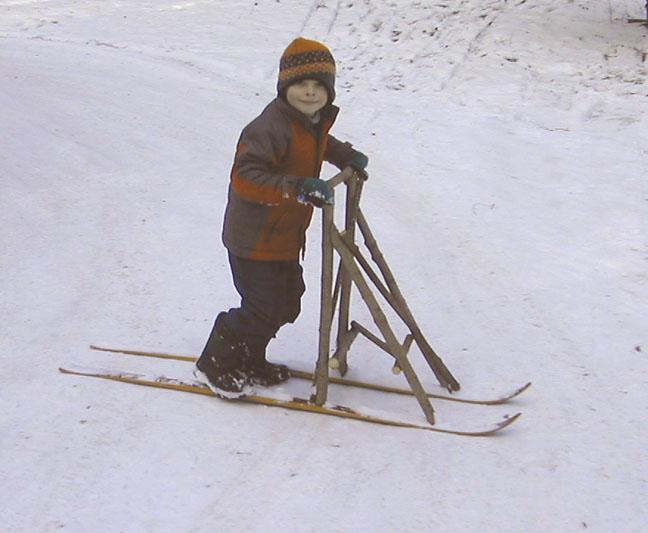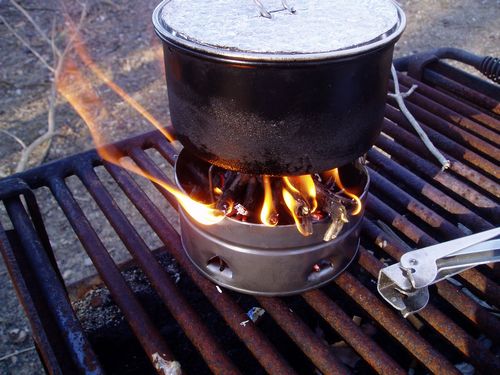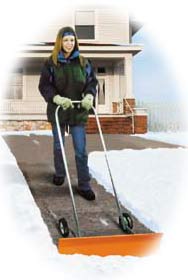We’ve been heating our house with wood about half the time so far this fall and early winter. It’s our first season on the wood. I’ve learned a few things so far.
I bought a big old wood stove for $300 and put it into the basement. Then I bought a buncha secondhand insulated stainless chimney for $400 and installed that. So that’ll be your minimum. I suppose a new stove is $1000 and a new good chimney is $2K.
Our cottagey house is about 1100 sq ft. To heat it so far all we do is open our basement door and the house gets warm. But if that doesn’t seem good enough we’ll try installing a grate in the wood floor over the stove in our main room. KISS.
I’ve been burning about 4 loads of wood a day in the freezing weather and that does the trick. We sleep under down at night and the house cools to about 55F on its own without the furnace turning on.
Managing fires is a fairly big deal. So is managing firewood. And stoves. So get the lowdown before you try it!
My bro Kelvin, who runs his own fancy-woods tree-salvaging sawmill at ravenfarm.com gradually gave me the lowdown, revealing the full complexities only after I was hooked. Clever! Thankfully, the leftover slab wood from his operation will be an easy source for me of great hardwood.
The first thing is safety. Have lots of clean space around your stove and don’t let wood/kindling/paper/debris creep in close. Install the stove to code, too. You don’t always need an insulated chimney but it gets less creosote. You need a magnetic chimney thermometer so you can dampen your fires right. You need a creosote-burning log ($15) and a chimney sweep brush. You need 2 big fire-extinguishers — one close, one far ($40-70 x 2). You need a chimney flare ($25).
I start a fire with 3 balls of newspaper and 4 sticks kindling. Then I light another ball of paper and hold it up in the stove until I get the flue drafting the right way. — Oh, be sure to have an easy-open window near the stove, too! Once that’s going a bit I add a couple chunks of wood. Once they’re going I fill the stove with another 4 big chunks. I burn all this on an open damper for a half hour — driving off moisture and resin vapors from the logs — that’s called “baking the load.” The chimney gauge reads “extra hot” by then. Then I dampen it down and it’ll go for 2 hours, when I hav to hustle another heavy armload of chunks into the stove and open the damper again for another half-hour… It takes a good hour a day to fuss with a stove.
Then there’s managing the firewood. Keep a couple days’-worth in the house, drying and warming. Don’t forget kindling: you’ll need a lot of it in storage and in the house. To heat a house each year, gosh, you might need, what, 12 cords? It’s a lot. Cut your wood to fit then split into reasonable chunks. Stack it 4 feet high, bark up, between 4 fence posts set 8 feet apart. Cover with a thin something — layer of bark, shingles, a bit of tarp. We use old roof tin. Then let it age TWO YEARS. Yep. Don’t rush it. Use hardwood. Pine causes the creosote.
If you’re buying wood, around here the good aged stuff is about $60/cord. Fresh nasty is $40. Patience is a virtue.
I can see why people get hydro-splitters… It’s a lot of wood.
Having a good, low-effort wood-cart is a great idea. Better than a barrow. Oh, and having a cart path to your indoor wood storage near the stove from outdoors is basically a MUST if you’re going to do this for years. If you’re arm-carrying wood more than a few feet, I’m betting you’ll give up soon. It adds up to a LOT of work. Real work. The eventually-break-you kind of work. I’m just saying.
Then there’s kinds of wood. 2-year seasoned wood burns with TWICE the BTU’s of other wood. You’ll feel the difference in your house easily. Once you do all that work and get a “cold” stove — where you burn all day and your house stays cold — you’ll insist on seasoned wood! And then there’s specie BTU’s: hickory is a favorite. They’re twice the BTU’s of walnut, say, which might seem like a good hardwood. It is, sure, but others are far better. Check it out: www.chimneysweeponline.com/howood.htm
And don’t overlook the report link at the bottom of that page. It gives insight to the modern ways of woodstoves and managing fire. It’s a bit intimidating! But the lesson is: burn dry wood and don’t overdampen. Still, modern stoves sound pretty fancy, with their pivoting baffle and secondary chamber: www.chimneysweeponline.com/howetwd.htm. Here’s some new stove tech: www.chimneysweeponline.com/hoebt.htm
Don’t be put off. If you live in low-population area a high-tech smog-free burn isn’t as critical. But it is amazing how clean-burning a new stove can be. Still, you can go with a homemade 55-gal drum stove and single-wall chimney to heat a polebarn and it’s no big deal.
You’ve seen me brag up Osage Orange before, right? Well, BTU’s are another BIG reason. OO rocks! It’s the best BY FAR of all.
OK, these woods aren’t literally twice as hot as each other, but that’s how it feels when you’re doing all the cutting and splitting and hauling and loading.
Man, I have a post here that says wood warms you 7 times, not twice. I think it’s more like 9 times, really.
It makes working for your wages and burning natural gas seem AWFUL SMART. : ) …But I do like having the backup/option.
Here’s another BIG thing: wood heat is LOTS BETTER QUALITY than forced air. A big motivator to get me down to start the stove is when our air-furnace kicks on with its noise and hot-wind. That’s kinda bad heat, really. So can feel how it might not even be so healthy. Of course, getting much backdraft woodsmoke in the house ain’t sweet neither. If I forget and close the basement door then go downstairs a half hour later that’s the BEST heat of all: it’s like a mini sauna region there in the stairwell! (I suppose in-floor water-pipe radiant heating might be the best, however.)
We work hard in our house and stay moving and wool-layered. So a 65-68F house is fine in the winter. We keep our 2nd floor semi-sealed with a stairwell quilt — no need to heat it while kids are at school. But now and then it’s fun to feel the heat when I burn some good dry oak for a few loads. My bro says the house picks up a “thermal load” which gradually spreads. I can find the place being 75F for hours. That’s nice’n’toasty and cute coz it’s free. And so we occasionally indulge in wintertime tee-shirts…



